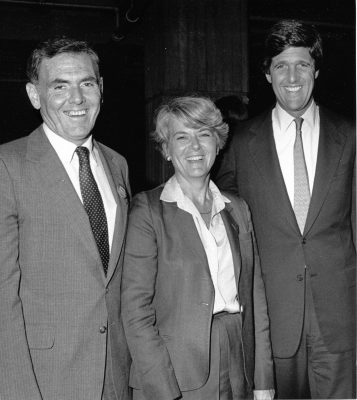Remembering the Legacy of Fordham Women
March 10, 2017
People around the world are celebrating Women’s History Month this March. The Women’s Studies department at Fordham University is no exception, as it celebrates the achievements made by its students while focusing on how to continue to advance their curriculum.
The university first opened its doors to women in 1918, where eight women enrolled in courses. In 1944, the College of Business Administration, now known as the Gabelli School of Business, began to admit women as well, who made up almost two-thirds of the student population during the fall semester. In 1964, the university opened Thomas More College, an undergraduate school for women, on its Rose Hill Campus.
Many women who attended Fordham have achieved success across academic, political and social fields. Geraldine Ferraro, Fordham School of Law ’60, was one of only two women in her graduating class and the first woman to run as a vice presidential candidate in the 1984 election. Anne M. Mulcahy is another notable alumna. She graduated from Marymount College, another Fordham school for women, in 1974 and became the CEO of Xerox Corporation in 2001. Taylor Schilling, FCLC ’06, participated in theater productions at Lincoln Center campus before eventually starring in the hit Netflix show, Orange is the New Black, a role in which she was nominated for both a Golden Globe and an Emmy award. Elizabeth Grant, also known as Lana Del Rey, majored in philosophy before becoming a world-renowned singer and Grammy nominee. She wrote a song referencing the university in “Fordham Road.”
The Women’s Studies program was launched in 1995. Faculty from both the the Fordham College at Lincoln Center (FCLC) and Fordham College at Rose Hill (FCRH) campuses created the program in order to offer courses on the study of the female experience as well as achievements made by women throughout history. Professor Amy Aronson, a member of the program since 1996, says that since its inception, the program has also updated its introductory course to include both gender and sexuality studies.
“It’s a really much more complex, intersectional program than when I first arrived,” Aronson said. “The curriculum evolves with participating faculty.”
The Women and Gender Studies Program will continue to expand to include more content about gender and sexuality, according to Aronson. It is also seeking to add more on issues such as race and class, in order to have a “deeper understanding” on what gender studies really is, and how different factors affect one’s identity.
“Intersectional gender studies is a foundation for understanding both our society and culture across disciplines,” Aronson said. “As the program moves to deepen its curriculum and its exploration of all those different intersections, the university’s culture changes, and the student’s perceptions change in very positive directions.”










